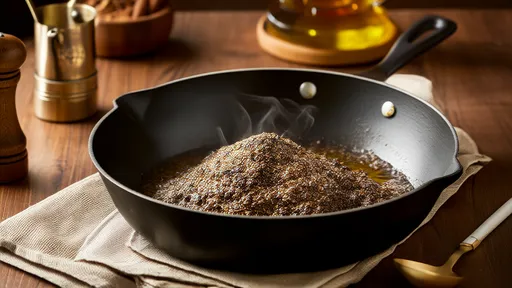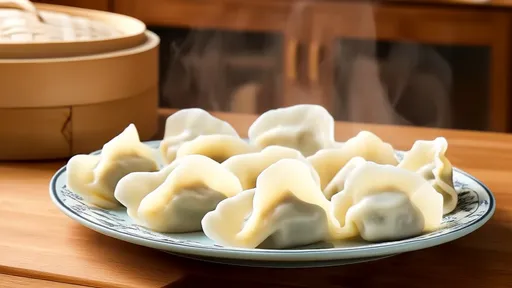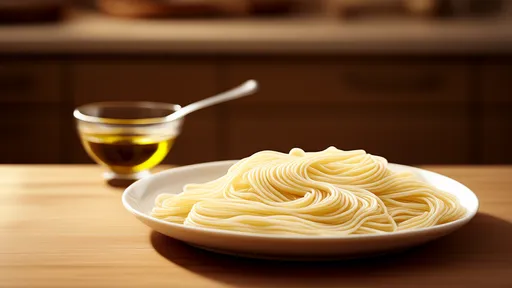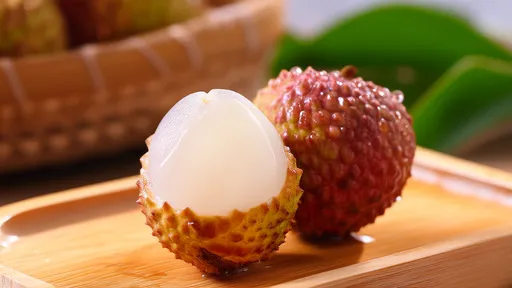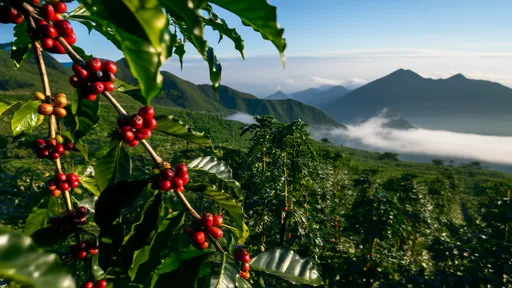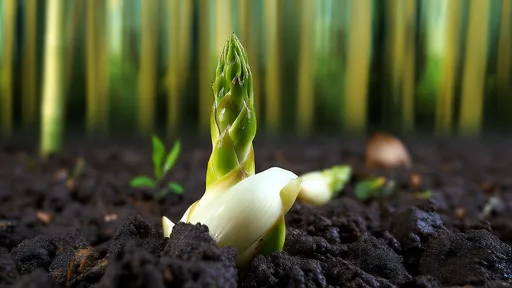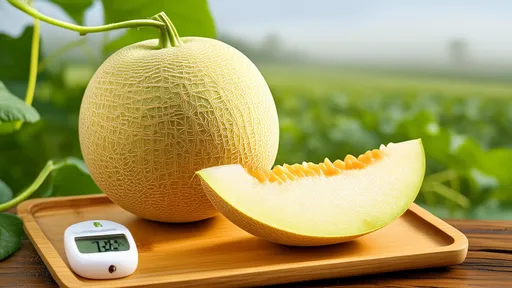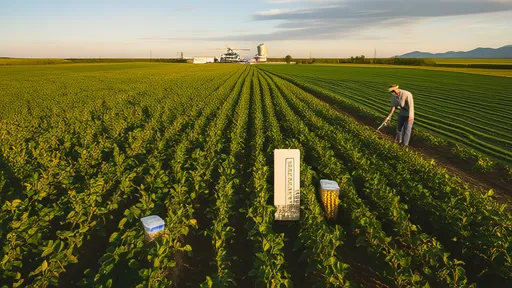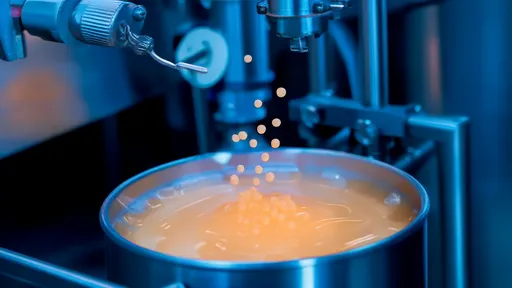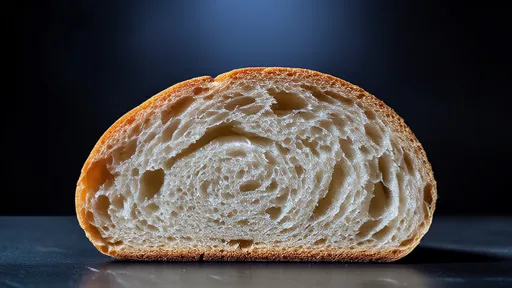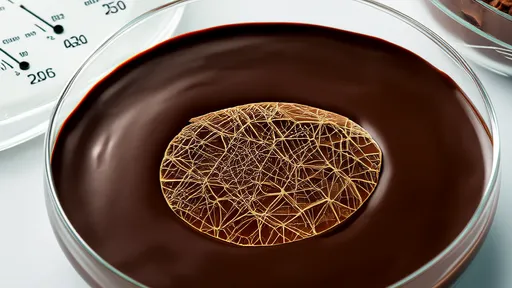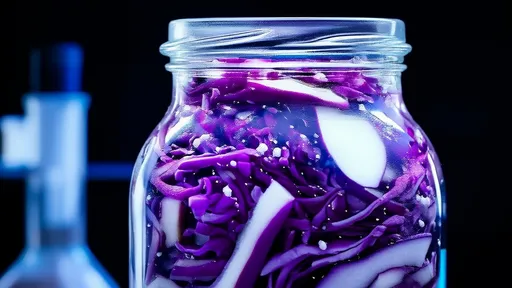The vast fields of Northeast China, stretching across latitudes from 40°N to 50°N, have long been celebrated as the heartland of soybean production. Among the many factors influencing soybean quality, protein content stands out as a critical metric, not just for nutritional value but also for industrial applications. Recent studies have unveiled a fascinating pattern: the protein content in Northeast soybeans exhibits significant variation along latitudinal gradients. This discovery has sparked renewed interest in understanding how geography shapes the very fabric of this agricultural staple.
Latitude as a Silent Architect of Protein Composition
Researchers analyzing soybean samples across multiple growing seasons observed a consistent trend—protein levels tend to increase as one moves northward within the Northeast region. The soybeans harvested near the 50th parallel, for instance, routinely show protein concentrations 3-5% higher than their counterparts grown at lower latitudes. This phenomenon persists even when controlling for variables like soil type and farming practices, suggesting an intrinsic relationship between latitude and protein synthesis.
The explanation lies in the complex interplay of environmental factors that change with latitude. Longer daylight hours during critical growth periods at higher latitudes appear to stimulate nitrogen fixation, the biochemical foundation of protein production. Meanwhile, the gradual temperature drop associated with northern locations slows carbohydrate accumulation, effectively tilting the metabolic balance toward protein formation. Farmers in Heilongjiang Province have unwittingly capitalized on this natural phenomenon for generations, producing soybeans that now command premium prices in international markets.
Microclimates and Local Exceptions
While the broad latitudinal pattern holds true, certain microclimates create intriguing exceptions to the rule. The Changbai Mountain foothills, despite their relatively southern position, produce soybeans with protein profiles resembling northern varieties. This anomaly stems from unique temperature inversions and volcanic soil compositions that mimic high-latitude growing conditions. Similarly, soybean fields along the Songhua River basin demonstrate elevated protein levels regardless of their precise latitude, benefiting from the moderating influence of the waterway on local temperatures.
Agricultural scientists have begun mapping these microclimate effects with surprising results. A recent three-year study documented cases where adjacent fields—separated by mere kilometers but differing in elevation—produced soybeans with protein content variations exceeding 2%. Such findings complicate the simple north-south narrative while opening new avenues for precision agriculture. Some progressive cooperatives now use this knowledge to strategically allocate fields for specific end-uses, reserving high-protein zones for tofu production while directing lower-protein areas to oil processing.
The Temperature-Protein Paradox
Conventional wisdom suggests that warmer temperatures accelerate plant growth, potentially boosting protein synthesis. However, Northeast China's soybeans defy this expectation. The cooler climates of northern latitudes, rather than inhibiting protein development, appear to optimize it. This paradox has led researchers to re-examine fundamental assumptions about legume physiology. Current theories posit that moderate cold stress triggers protective metabolic responses in soybean plants, including increased nitrogen uptake and altered enzyme activity—both conducive to protein accumulation.
Field experiments have demonstrated that artificially warming northern soybean plots can reduce protein content by up to 8%, while controlled cooling in southern fields yields the opposite effect. These manipulations, though impractical for large-scale farming, provide crucial insights for breeding programs. Several new soybean cultivars now in development aim to mimic high-latitude protein traits regardless of growing location, potentially revolutionizing quality consistency across regions.
Historical Context and Future Implications
The latitudinal protein gradient isn't a new phenomenon—traditional food cultures across Northeast China have reflected this biological reality for centuries. Local cuisines north of Harbin historically favored soybean-based dishes requiring firm textures (like frozen tofu), while southern areas developed preferences for soy milk and tender bean curd. This culinary divide aligns remarkably well with the protein distribution pattern, suggesting an unconscious adaptation to agricultural realities long before modern science explained them.
Today, this knowledge carries significant economic weight. As global demand for plant-based proteins surges, Northeast China's high-latitude soybeans have become strategic commodities. Some trading firms now employ latitude-specific pricing models, much like the wine industry's terroir system. Meanwhile, climate change adds urgency to ongoing research—shifting temperature patterns could potentially disrupt or amplify existing protein gradients, with unpredictable consequences for food security and agricultural economies.
The story of Northeast China's soybeans serves as a powerful reminder that some of nature's most valuable secrets hide in plain sight, written in the language of latitude and expressed through something as humble as a bean's protein content. As science continues to decode these geographical whispers, they may well hold the key to more sustainable, nutritious food systems in an increasingly protein-hungry world.
The art of unlocking the full potential of spices lies in a time-honored technique: dry-roasting, crushing, and coaxing out their essential oils. This ancient method, passed down through generations of culinary masters, transforms ordinary spices into aromatic powerhouses that elevate dishes to extraordinary heights. The process may seem simple at first glance, but mastering it requires patience, precision, and an understanding of how heat interacts with different spice varieties.
For many home cooks and professional chefs, peeling and cutting yams can be an unexpectedly unpleasant experience. The vegetable, known for its nutritional benefits and culinary versatility, has a notorious side effect – it can leave your hands unbearably itchy. This common kitchen woe has led to numerous home remedies and old wives' tales, but one surprising solution has emerged from modern technology: the microwave.
The art of making dumplings is a cherished tradition in many cultures, particularly in Chinese cuisine. While the filling often steals the spotlight, the dough wrapper plays an equally crucial role in ensuring the dumplings hold together during cooking. One of the most effective yet underrated techniques for preventing dumpling wrappers from tearing is incorporating egg whites into the dough. This method leverages the science of proteins to create a more resilient and elastic wrapper, capable of withstanding the rigors of boiling or steaming without falling apart.
In kitchens around the world, cooks face a common nemesis when preparing pasta: sticky noodles that clump together into an unappetizing mass. While many swear by the traditional method of rinsing cooked pasta with cold water to prevent sticking, a growing number of culinary experts argue that tossing freshly boiled noodles with olive oil proves far more effective. This technique not only preserves the pasta's ideal texture but also enhances its flavor profile in ways cold water simply cannot match.
Guangdong lychee, a jewel of southern China's fruit basket, has long been celebrated for its succulent flesh and floral aroma. Beyond its irresistible taste, recent research has uncovered a hidden treasure within its vibrant red peel—polyphenols with remarkable antioxidant properties. These compounds are quietly revolutionizing our understanding of how this tropical fruit may contribute to human health far beyond basic nutrition.
The high-altitude coffee farms of Yunnan Province have long been celebrated for producing beans with a distinctive flavor profile. Among the many factors influencing taste, altitude plays a particularly crucial role, especially when it comes to acidity. Unlike the bright, sharp acidity often associated with African coffees, Yunnan’s beans exhibit a more nuanced relationship between elevation and tartness—one that defies simple expectations.
The tender crunch of Zhejiang bamboo shoots has long captivated gourmets and scientists alike, their delicate texture standing as a testament to nature's perfect engineering. While chefs praise their culinary versatility, researchers have uncovered a fascinating cellular secret behind their remarkable freshness – turgor pressure. This biological phenomenon, often overlooked in discussions of vegetable quality, holds the key to understanding why these spring delicacies from China's eastern province maintain their youthful crispness long after harvest.
The Hami melon, a jewel of Xinjiang's agricultural bounty, owes its legendary sweetness to a climatic phenomenon as ancient as the Silk Road itself. Nestled in the arid embrace of China's northwest, this golden-fleshed fruit has thrived for centuries under skies that scorch by day and chill by night. What appears as hardship to most crops becomes the secret alchemy transforming ordinary melons into saccharine masterpieces.
The vast fields of Northeast China, stretching across latitudes from 40°N to 50°N, have long been celebrated as the heartland of soybean production. Among the many factors influencing soybean quality, protein content stands out as a critical metric, not just for nutritional value but also for industrial applications. Recent studies have unveiled a fascinating pattern: the protein content in Northeast soybeans exhibits significant variation along latitudinal gradients. This discovery has sparked renewed interest in understanding how geography shapes the very fabric of this agricultural staple.
The process of homogenization in ice cream mix preparation plays a pivotal role in achieving the desired texture, stability, and mouthfeel of the final product. At the heart of this process lies the principle of fat emulsification, where milk fat globules are broken down into smaller, more uniform particles. This not only enhances the emulsion's stability but also ensures a smoother consistency in the ice cream. The science behind homogenization parameters is both intricate and fascinating, as it directly influences the quality of the end product.
The phenomenon of bread staling has puzzled bakers and food scientists for generations. While most consumers associate staleness with dryness, the underlying mechanisms involve complex interactions between starch retrogradation and water migration within the bread matrix. This intricate dance between moisture and crystalline structures ultimately determines whether your morning toast will delight or disappoint.
The formation of rock sugar crystals is a fascinating interplay of chemistry and physics, where the delicate balance of supersaturation dictates the birth and growth of crystalline structures. At its core, this process hinges on the creation of nucleation sites—tiny clusters of molecules that serve as the foundation for larger crystals. The journey from syrup to shimmering rock sugar is anything but straightforward, and understanding the factors that influence nucleation can unlock greater control over crystal size, clarity, and yield.
The art of chocolate tempering is a delicate dance of temperature control, one that hinges on the precise crystallization of cocoa butter. This process is not merely a technical step in chocolate production; it is the very heart of what gives chocolate its signature snap, glossy sheen, and melt-in-the-mouth texture. Without proper tempering, chocolate can appear dull, develop a grainy texture, or fail to release cleanly from molds. The secret lies in understanding how cocoa butter behaves under varying thermal conditions.
The science behind pickling vegetables has fascinated food chemists and home cooks alike for centuries. While the process may seem straightforward – submerging vegetables in brine – the molecular dance occurring within each cell reveals a complex interplay of chemistry and physics. Recent advances in sodium ion detection techniques have allowed researchers to map the distribution of salt throughout pickled vegetables with unprecedented precision, shedding new light on this ancient preservation method.
The phenomenon of "wine legs" or "tears of wine" has captivated drinkers and scientists alike for centuries. When a glass of wine or spirit is swirled, droplets form on the inside of the glass, creating mesmerizing streaks that slowly trickle back down. This elegant display isn’t just a sign of a good drink—it’s a fascinating interplay of fluid dynamics, surface tension, and evaporation.
